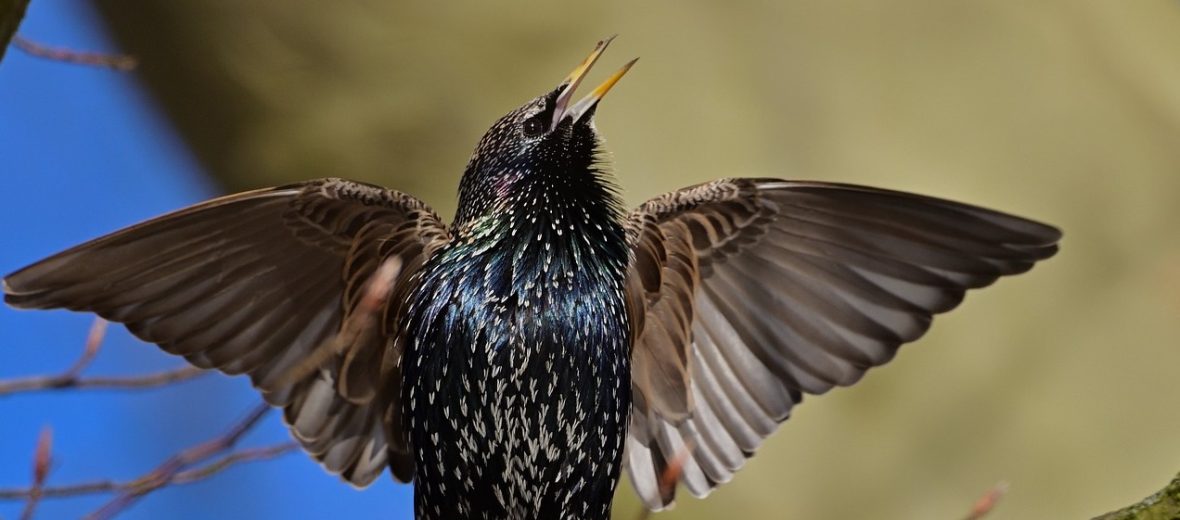
The common starling, aka starling or European starling, can be found on every continent, sans Antarctica. These birds can tolerate a wide range of habitats from grazing pastures, grassy regions – like farmlands, reedbeds, playing fields (like football and baseball fields), golf courses, airfields with short grass, and urban, & suburban habitats. With an estimated global population of around 150,000,000, these birds are listed as Least Concern by the IUCN. They do sometimes face the threats of habitat loss at the hands of livestock grazing and ranching; hunting; and trapping.
First the Stats…
Scientific name: Sturnus vulgaris
Weight: Up to 3.6 ounces
Length: Up to 9.1 inches
Wingspan: Up to 17 inches
Lifespan: Up to 23 years
Now on to the Facts!
1.) Common starlings are very gregarious birds that congregate into large flocks.
2.) They can be seen in flight gathered into a tight mass that can wheel and turn in unison. They will then land together in fields and then suddenly all take off again.
3.) These birds incorporate 3 main types of foraging: hawking (hunting on the wing or in mid flight), lunging (striking forward to catch moving prey), and probing (diving their beak into the ground randomly to find earthbound insects).
4.) Communication is conducted via various calls. Calls such as a threat call, an attack call, a flock call, a snarl call, and a copulation call.
5.) While roosting and/or bathing, these birds are very noisy. Enough so to be a nuisance to humans around them.
But wait, there’s more on the common starling!
6.) Both males and females sing. But males tend to do so more frequently than females.
7.) A group of starlings is called a filth, murmuration, constellation, or scourge.
Did you know…?
In southwestern Jutland, Denmark flocks of more than 1,000,000 can be seen, just before sunset.
8.) These birds feast on spiders, moths, mayflies, dragonflies, damsel flies, caddisflies, houseflies, sawflies, grasshoppers, earwigs, lacewings, beetles, bees, wasps, ants, snails, earthworms, small amphibians, small lizards, seeds, grains, fruits, nectar, and will gladly take food waste from humans.
9.) Starlings can be both monogamous (mate for life) and polygynous (1 male mates with multiple females).
10.) Males without a partner will locate a suitable nesting site and not only sing while building the nest, but will also adorn the nest with flowers, trinkets, and greens in order to attract a mate.
But wait, there’s still more on the common starling!
11.) Once a male pairs up with a female, they continue to construct the nest with dry grass, straw, and twigs with an inner lining constructed of feathers, soft leaves, and wool.
12.) Females lay up to 5 eggs that hatch in up to 13 days.
Did you know…?
Not only will these birds feed in short grass, but they have also been documented landing on grazing cattle and feeding on parasites, like ticks, that are living on said cattle.
13.) The chicks are fledged and independent in up to 5 weeks.
14.) A mated pair can raise up to 3 broods a year.
15.) Common starlings have the ability of mimicry. They can copy the sounds of other birds and even machinery.
Now a Short Common Starling Video!
Be sure to share & comment below! Also, check out the Critter Science YouTube channel. Videos added regularly!
Want to suggest a critter for me to write about? Let me know here.
Some source material acquired from:



